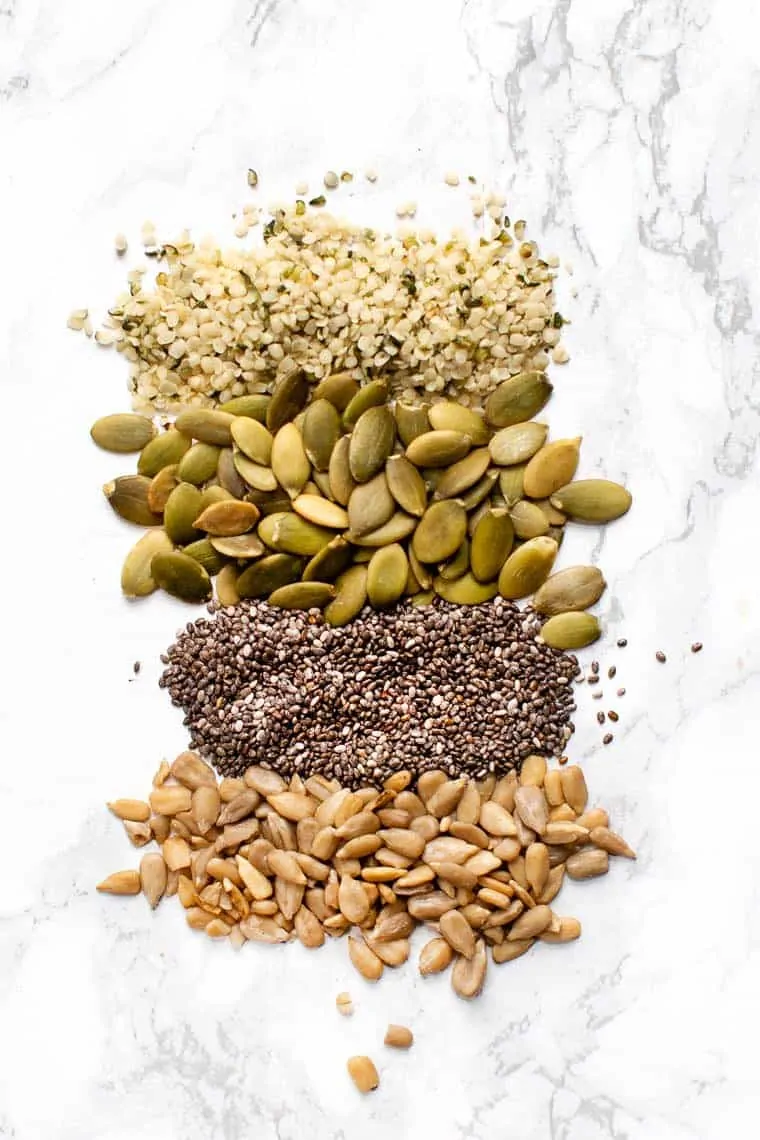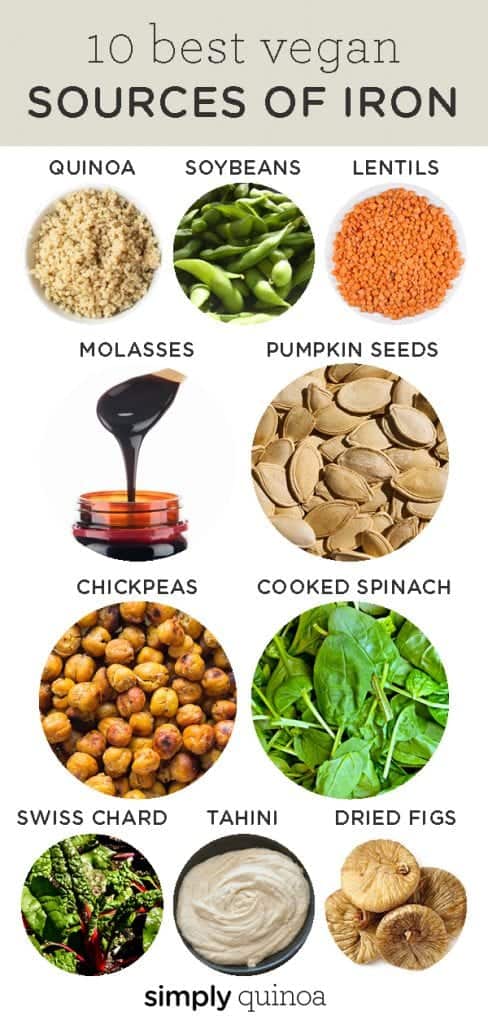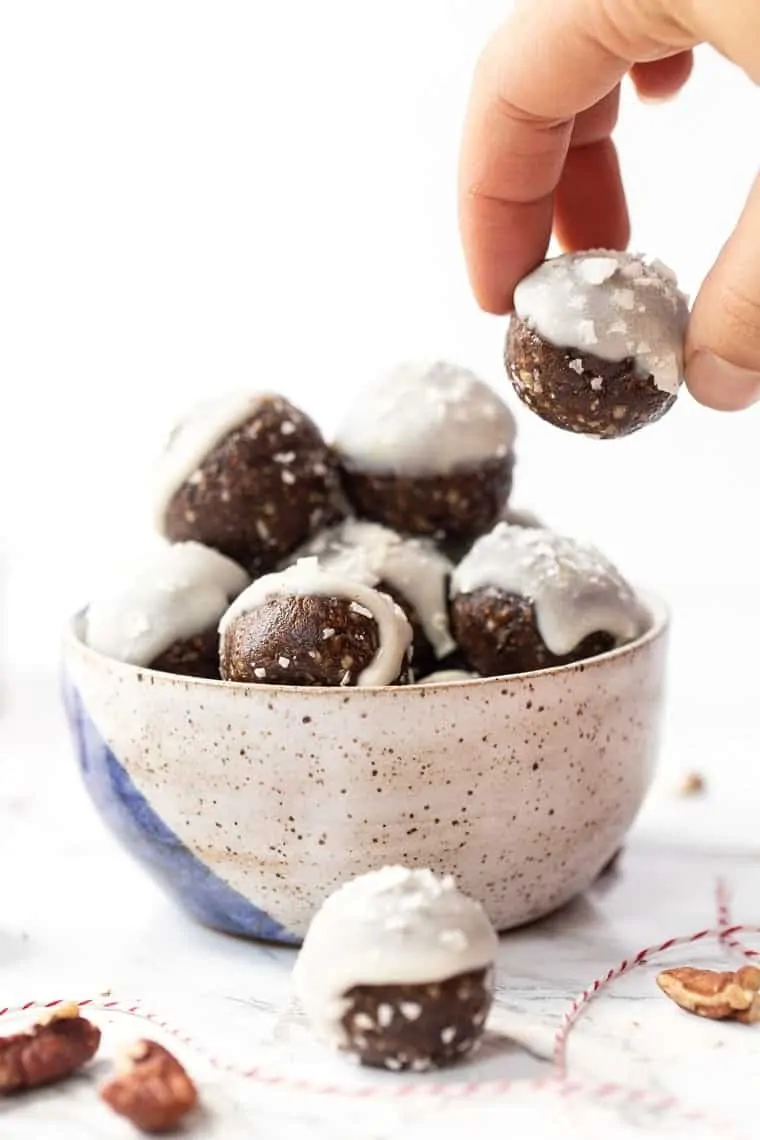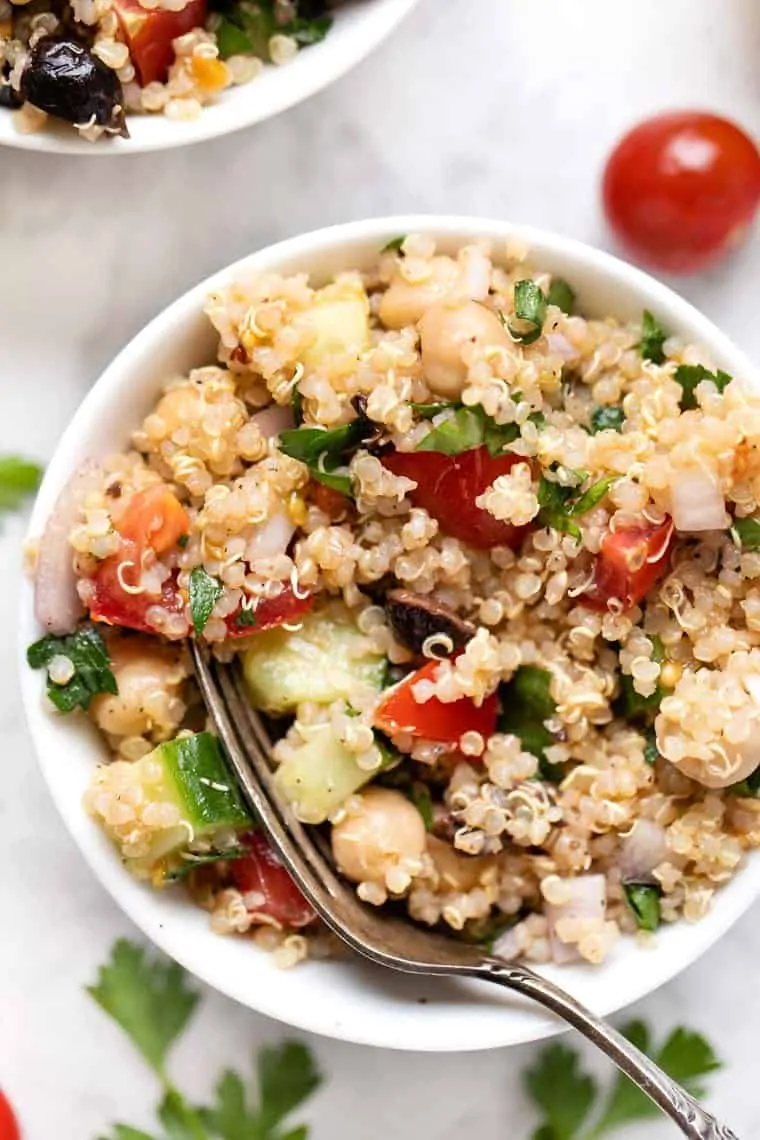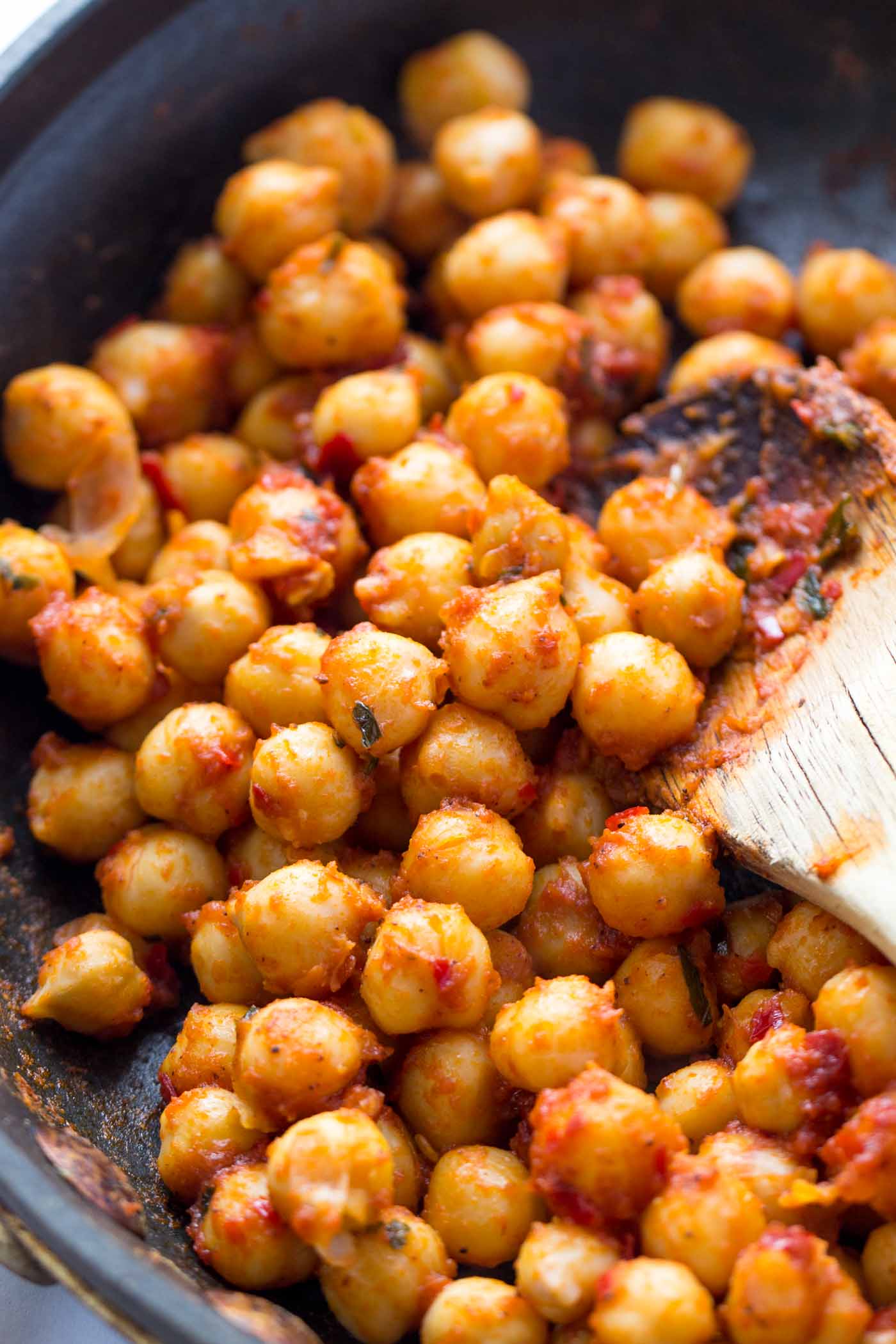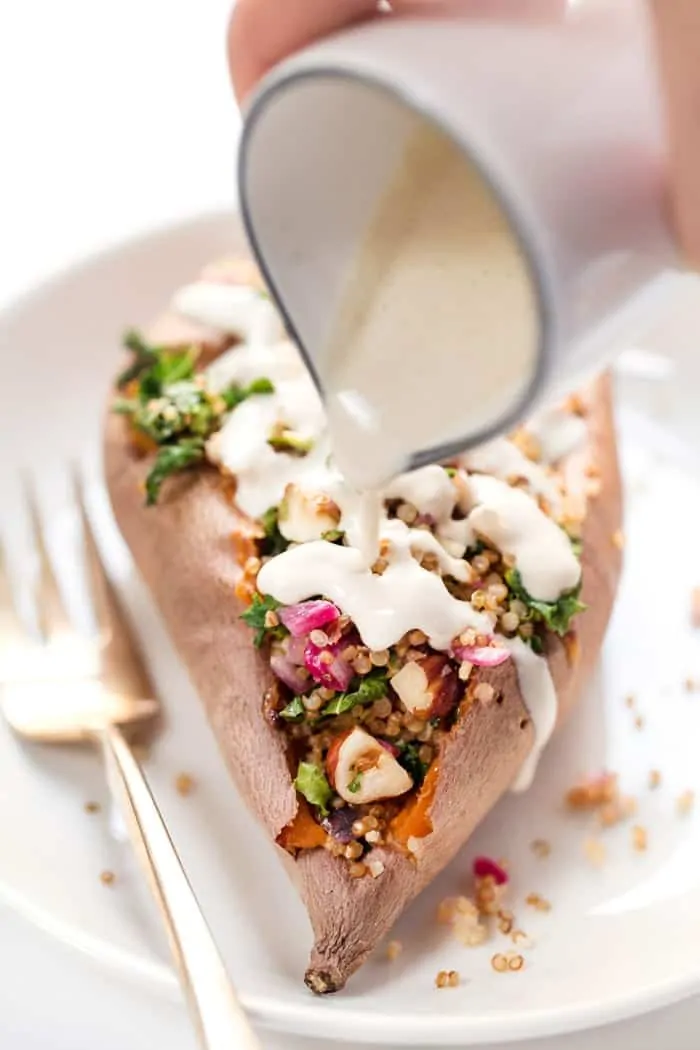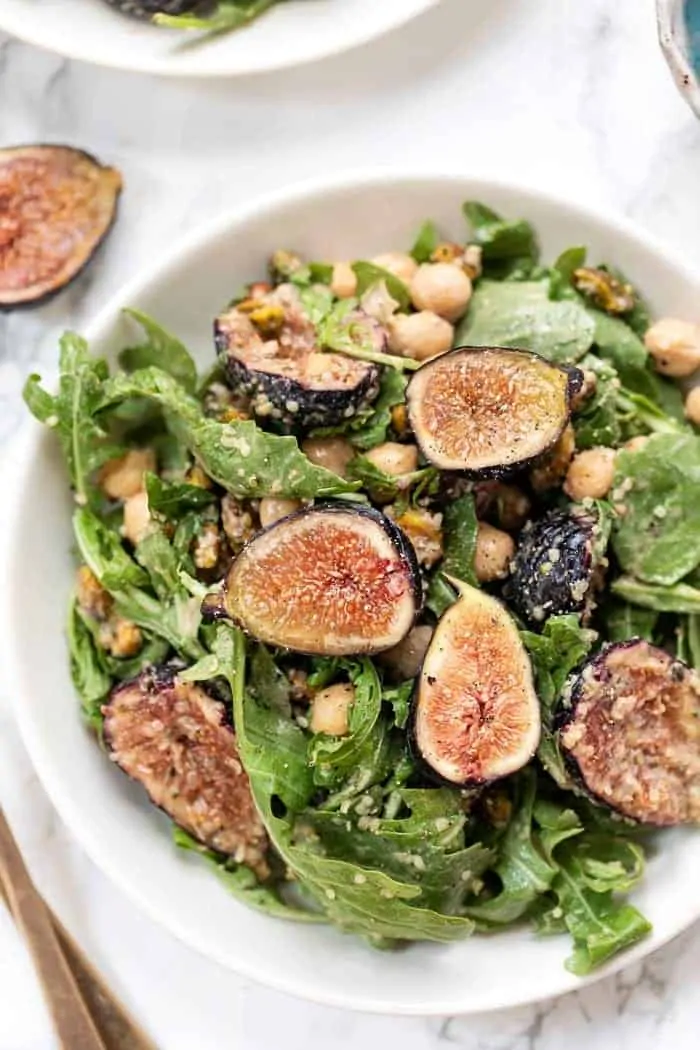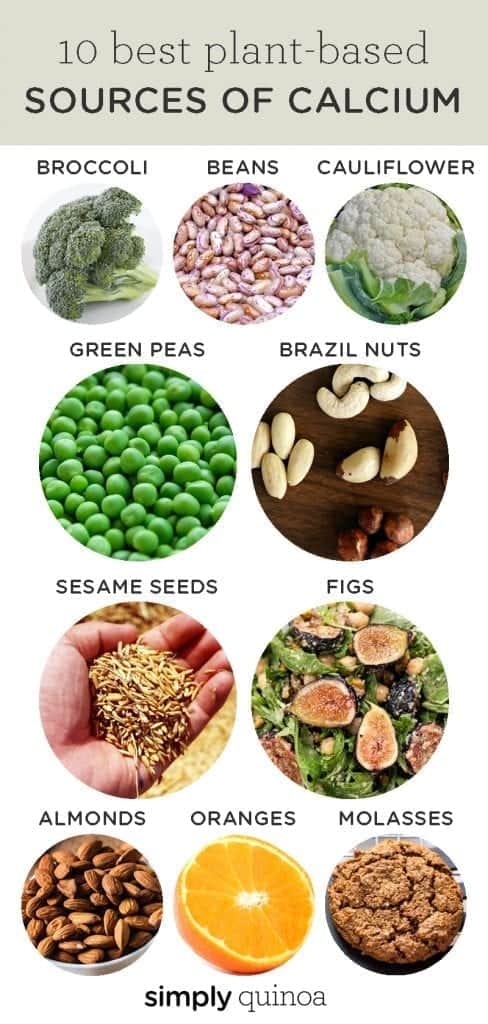A list of the 10 best vegan sources of iron that don't involve eating meat or dairy products! This list is full of healthy plant-based ingredients high in iron!
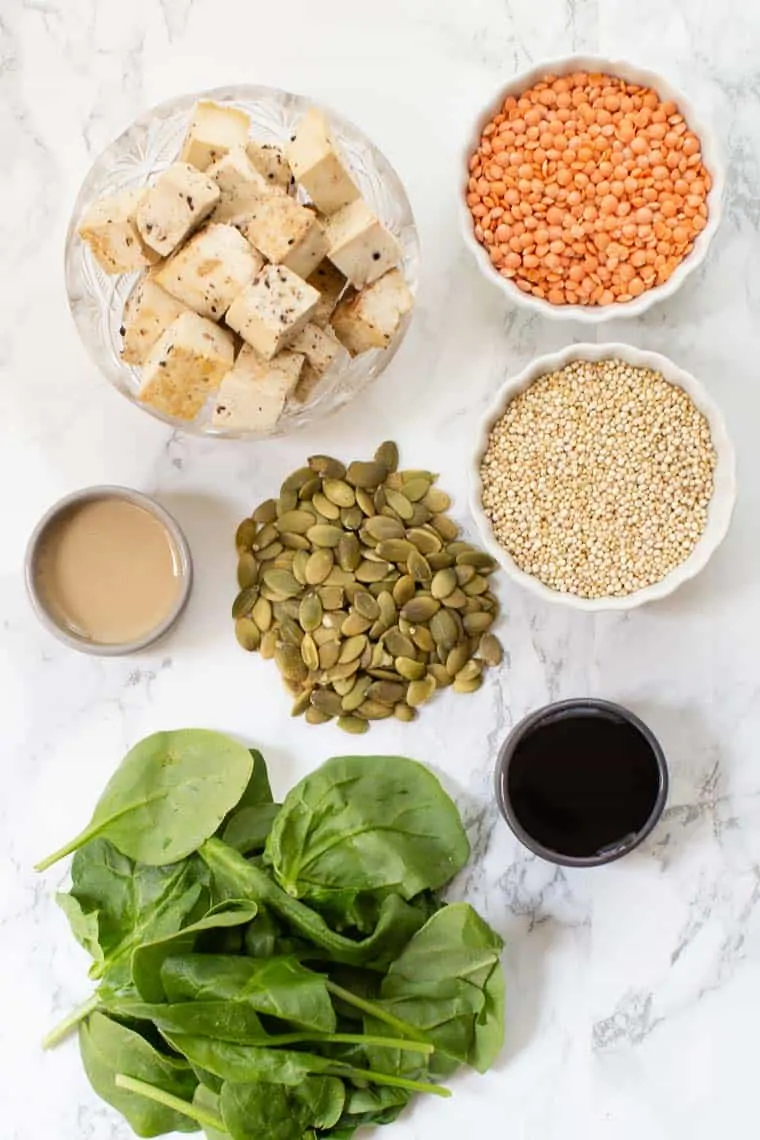
We've been spending a lot of time looking at nutrients and today we're focusing on a super important one: iron. Iron is one of the most important minerals in our body, but one that many people are also deficient in.
I get a lot of questions about how to find iron in a plant-based diet and what the best vegan sources of iron actually are, so today I wanted to chat about it all. We're going to learn why iron is important and what function it plays in the body, as well as why it's more difficult for vegans/vegetarians to get iron into their diets.
I'll also walk you through the 10 best plant-based sources of iron, and even give you my favorite vegan recipes high in iron. Hopefully, after reading this post, you'll have a better understanding of the what, where, why and how around iron!
Why is Iron Important?
Iron is found in every single cell in our body. The primary function of iron in our body is the production of hemoglobin. Our hemoglobin molecules, which are essential for carrying oxygen throughout our system, contain 60 – 70% of our body's iron supply. Aside from just being important for oxygen, iron is also stored in our liver, spleen and bone marrow, which can be drawn from in case we need a little extra for hemoglobin production.
The trick with iron is that it's also a mineral that many people are deficient in, especially in plant-based eaters. Heme iron, which is commonly found in red meat, is absorbed more easily (about 10 – 30% absorption rate). Nonheme iron, which is what is found in plants, is less absorbable (8 – 10%), which is why it's important to know what the best vegan sources of iron actually are.
If you are deficient iron (aka anemic), that essentially means you have a reduction in the number of red blood cells in your body. This can also cause you to get lightheaded upon standing, increased tiredness or lethargy, as well as dizziness spells.
Best Vegan Sources of Iron
Whether you're trying to get more iron into your diet or want to stop taking supplements and get the minerals from your food, hopefully, this list will give you a better sense of how to do that. You might see where you're already getting iron and maybe a few things you can increase in (or add to) your diet which will help you get even more iron.
1. Soybeans
Soy tends to get a bad rap in the health world, but it is still a very healthy product. Soy is high in protein and calcium and is also the best vegan source of iron out there. When you're shopping for soy products, make sure you're buying ones that are organic and non-GMO and try to limit your intake to a few times per week. If you aren't sensitive to it already (through a sensitivity test), I think incorporating a little *high quality* soy into your diet is completely fine.
Iron in soybeans: 1 cup cooked = 9 mg
2. Molasses
Molasses has been dubbed one of the healthiest sweeteners because it's rich in quite a few minerals. It has the lowest sugar content of any cane sugar product – it's actually the byproduct of sugar cane's refining process and thus is packed with all the nutritional benefits. Blackstrap molasses contains high amounts of iron, magnesium, vitamin B6, selenium and calcium!
Iron in molasses: 2 tablespoons = 7 mg
3. Lentils
I absolutely love lentils! They're easy to make, they're super high in protein and they taste delicious. Lentils are also high in fiber, they're a great source of vitamin K and they also contain a good amount of manganese and phosphorus. In addition, they're incredibly versatile! You can use them in soups, stews, salads and can now even find lentil-based pasta!
Iron in lentils: 1 cup = 6.6 mg
4. Quinoa
Do I need to explain my love for quinoa? I don't think so at this point! But quinoa is hands down one of my favorite grains. It's high in protein and fiber, but it's also high in a bunch of trace minerals including magnesium, manganese and iron. There are also a million and one different ways to eat quinoa (as proof by this site alone!).
Iron in quinoa: 1 cup = 6.3 mg
5. Pumpkin Seeds
I don't eat pumpkin seeds very often, but they're one of those items I know I could add into my diet more. They're so easy to just mix into things – whether that's on top of a salad, tossed in a smoothie or used in a trail mix. They're very vitamin and mineral rich and are also the highest source of iron in the nut/seed category.
Iron in pumpkin seeds: 1/4 cup = 5.2 mg
6. Chickpeas
Oh boy, do I love chickpeas! As someone who eats mostly plant-based, chickpeas are a staple in my diet. They're high in fiber, high in protein and they're super affordable. They're also packed with other nutrients like calcium, potassium, phosphorus and yep, iron! Actually, most beans are high in iron, so the amount varies on the type of bean, but since chickpeas are one of the highest, that's what I've highlighted below.
Iron in chickpeas: 1 cup (cooked) = 4.7 mg
7. Swiss Chard
Swiss chard is a green that really doesn't get talked about much. I don't personally eat it frequently, but when I do I actually really enjoy it. I just don't seem to reach for it at the store. That's changing going forward though because swiss chard is the has the highest level of iron than all other greens. I'm definitely going to add this into the weekly dinner rotation!
Iron in swiss chard: 1 cup (cooked) = 4 mg
8. Spinach
You know I love me some spinach! Spinach is on definitely a must-have on my staple grocery list, and is an ingredient I eat almost daily. Spinach is high in vitamins and minerals, as well as chlorophyll, calcium, protein, and iron. To me I also think spinach has the mildest taste of all greens, so I find it the easiest to incorporate into my diet. That's probably why I eat it so much!
Iron in spinach: 1 cup (cooked) = 3 mg
9. Tahini
I'm obsessed with tahini. I pretty much put it on everything at this point! I especially love tahini in salad dressing, but it's also fabulous as a drizzle on roasted vegetables, quinoa bowls and even stuffed peppers. Tahini is also super nutritious. It's high in protein, full of healthy fats, and a great source of calcium and iron.
Iron in Tahini: 2 tablespoons = 3 mg
10. Dried Figs
I've raved about my love for figs many times before, and this is just another reason why they're one of my favorite fruits. Figs are not only delicious, but they're also high in fiber, vitamin A, B1 and B2 as well as manganese, potassium and calcium! Dried figs are actually higher in calcium than fresh figs, but both are great.
Iron in dried figs: 5 whole = 2 mg
Vegan Recipes High in Iron
Now for the food! Here are some of my favorite vegan recipes that are high in iron (yes, they're 100% plant-based). You can also create your own high iron recipes by combining some of the foods we've included above!
- Chipotle Tofu Quinoa Bowls
- N0-Bake Gingerbread Energy Balls
- Super Seed Homemade Peanut Butter
- Quinoa Greek Salad with Chickpeas
- One Pot Mediterranean Quinoa
- Instant Pot Lentil Chili
- Detox Turmeric Lentil Soup
- Warm Lentil Salad with Spinach & Quinoa
- Vegan Ricotta Stuffed Mushrooms
- Chewy Ginger Molasses Cookies
